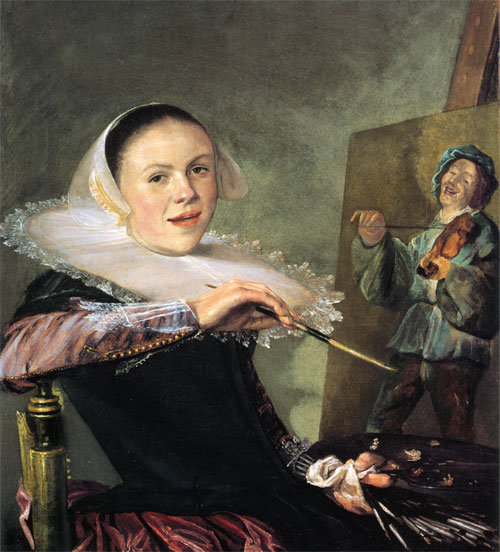289 years as the daughter of an artist
289 years as the daughter of an artist
Posted March. 21, 2019 07:44,
Updated March. 21, 2019 07:44

There are many artists who drew self-portraits. Artists paint self-portraits as a method of expressing their feelings or status. Dutch Golden Age painter Judith Leyster (1609–1660), however, needed hundreds of years to have her self-portrait recognized as a self-portrait.
Unfortunately, this self-portrait had been known as the painting of the then master Frans Hals for nearly 300 years. The reason was because it was an outstanding masterpiece that shared a style similar to Hals’. The artist in the painting is sitting in front of an easel, turning towards the audience. Her facial expression is bright and full of confidence. Working on is on the easel, she is holding a brush on her right hand and a palette, some 10 brushes and a cloth on her left hand. Ample volume of the skirt, the excessively large and round collar, and the find quality lace on the sleeves appear to be too fancy for painting. This was a symbol of the artist revealing her wealth and a way to show her technical capacity to express the delicate lace decoration. This self-portrait could be seen as today’s profile photograph.
In fact, Leyster was a star artist of Haarlem (capital of Noord-Holland state), praised by the public and recognized by experts from the age of 19. Writers back then demonstrated her as a “kind-hearted artist with acute insight” and praised her. At a period when female artists were rare, Leyster, who became an artist like her father, was the first female artist in Haarlem who was registered at the “Guild of St. Luke,” an artist association, and worked as an independent artisan at 24.
Irrespective of her success, her paintings were thought to be the works of other masters of the same guild due to prejudice and misjudgment of artists. Even when this painting was sold to an American painter at 250,000 dollars in 1929, the painting was titled the “daughter of an artist” by Hals under the sales catalogue. In 1949, when the painting was owned by the Boston National Museum, the painting was finally recognized to be Leyster’s and the title changed to “Self-portrait.” It was 289 years since the artist’s death.







